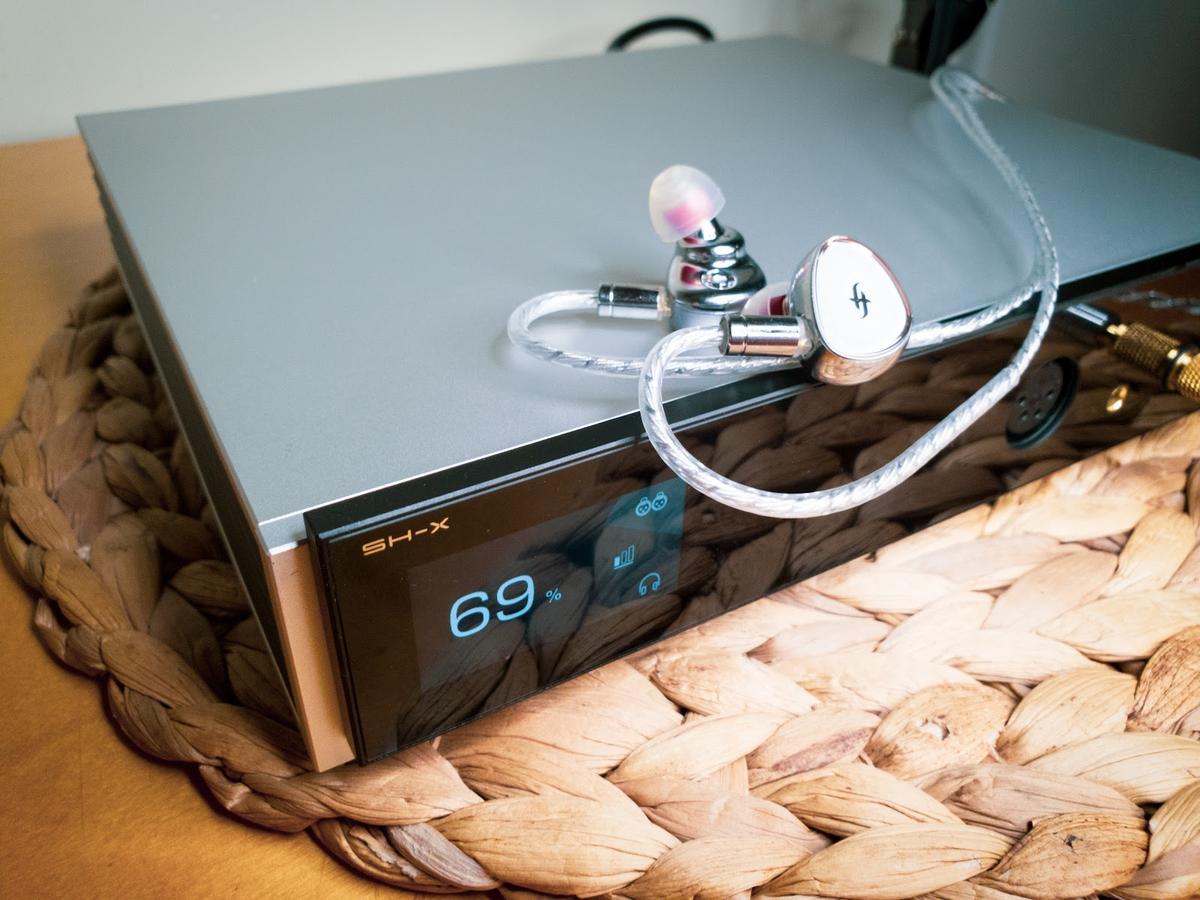Despite showing creative limitations, the SH-X amplifier is SMSL’s best showing yet.
- Oodles of power into low-impedance loads
- Elegantly made
- Transparent, yet not clinical
- Low-gain is a godsend for IEMs
- Perfect channel balance at all volume settings
- Power in high-impedance loads is nothing special
- Pre-amp outputs are less transparent than the headphone outputs
- No physical controls – all controls have to be accessed via the menu
- Some might find the presentation too vanilla
- The highest gain can only be used with weak sources
With the advent of measurements-first headphone amplifiers, three circuit types have been manufacturer favorites – pure opamps, nested feedback composites, and THX AAA modules. These can all be designed to achieve impressive measured performance and sometimes even sound good.
The SH-X is the companion piece to the curiously named SU-X DAC, which left me in awe even if it didn’t check my exotic engineering boxes. Therefore, I’m ready to keep an open mind once more and see if a chip amp can entertain this discrete-circuit lover.
The SMSL SH-X takes the opamp approach and turns it up to 80. If one is good, surely having 80 opamps working in tandem will be better? As with any approach, there are tradeoffs, so read on to find out if throwing chips at a problem makes it go away!
Unboxing and First Impression
Design and Build
The SMSL SH-X uses the same design language as the SU-X. A silver aluminum case made out of milled-out panels with a slightly oversized tempered glass slab, which houses both an LCD display and the three output jacks.
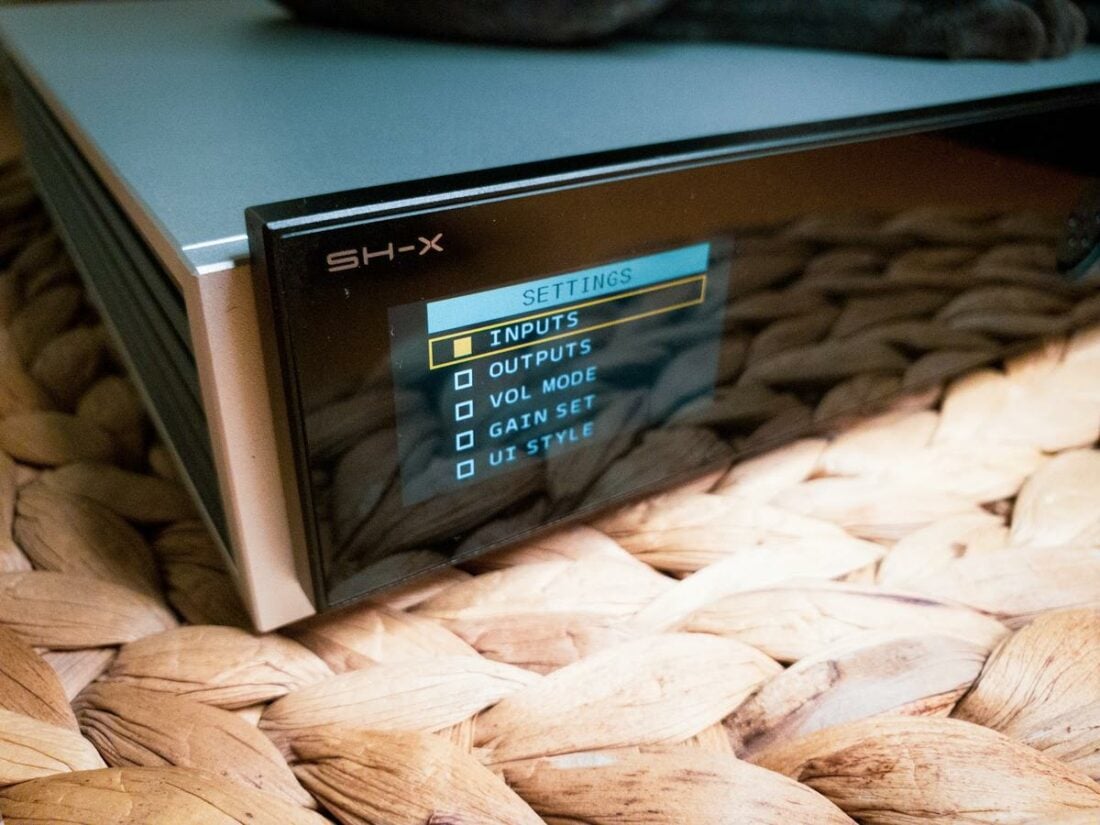
As for the backside, there are no surprises there – RCA inputs for SE and XLR for BAL. And neither of the XLR ports are upside down as they were on the SMSL SU-X. There are also identical preamp outputs that come from the voltage amplification stage and thus have gain. The USB-C input is reserved for firmware updates.
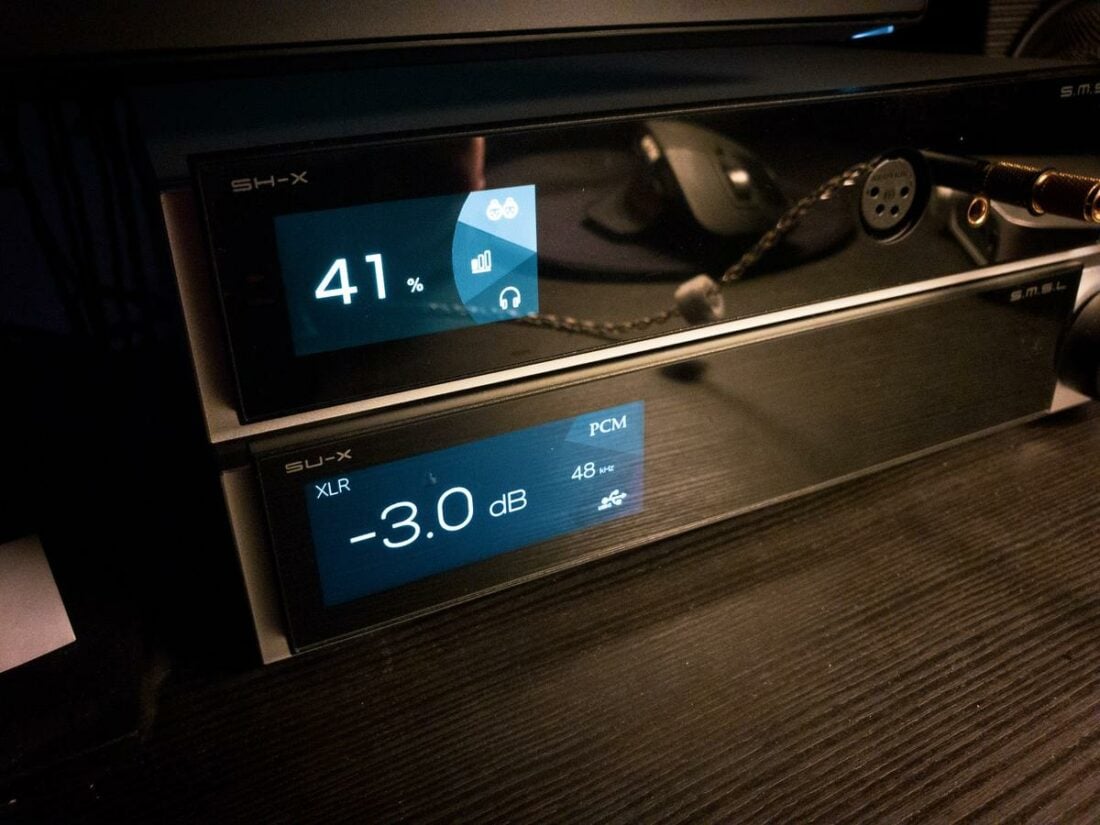
My only aesthetic design gripe is when the SH-X is buddied up with the SU-X DAC. The screens on both devices are of different sizes, and the single indicator LED also doesn’t match up. I won’t remove any points for this, but it grinds my gears.
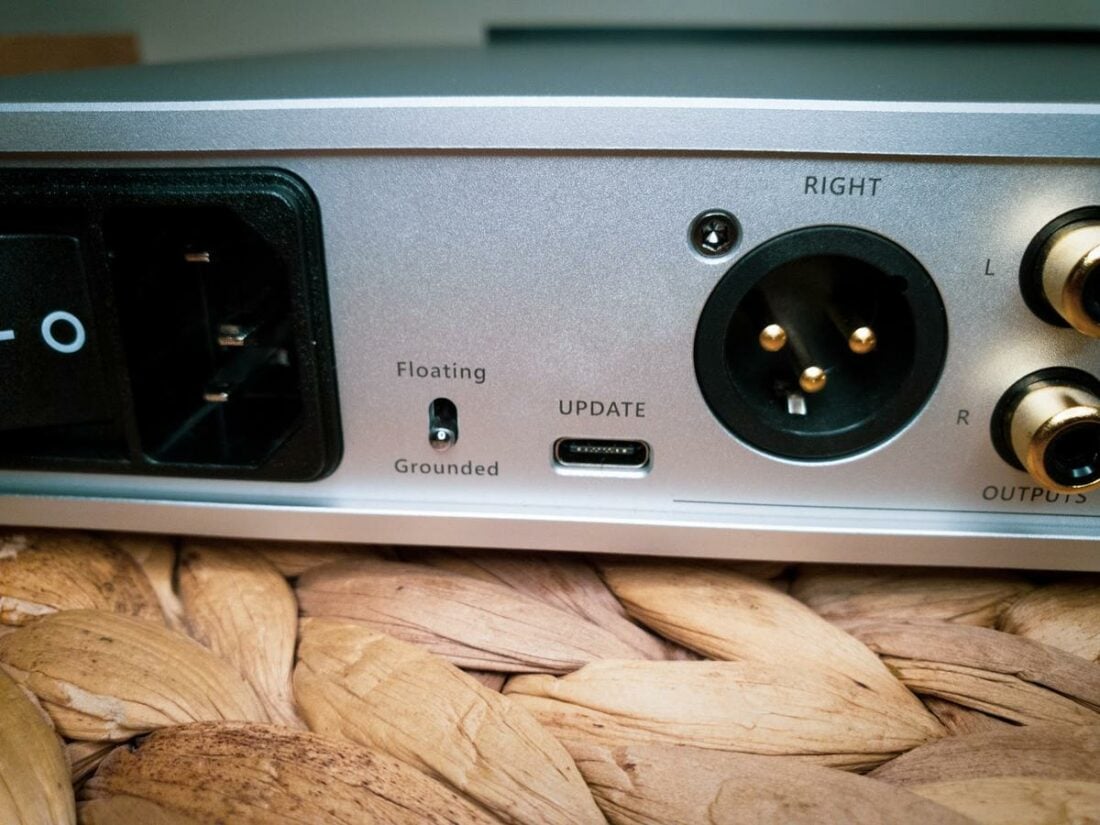
Controls
Once more, we’re met with the usual SMSL control scheme – an encoder knob and a handy remote. Turning the knob engages the relay-based volume attenuator, and pushing the knob enters the main menu. We can select inputs, outputs, gain, and change various display options within the menu.
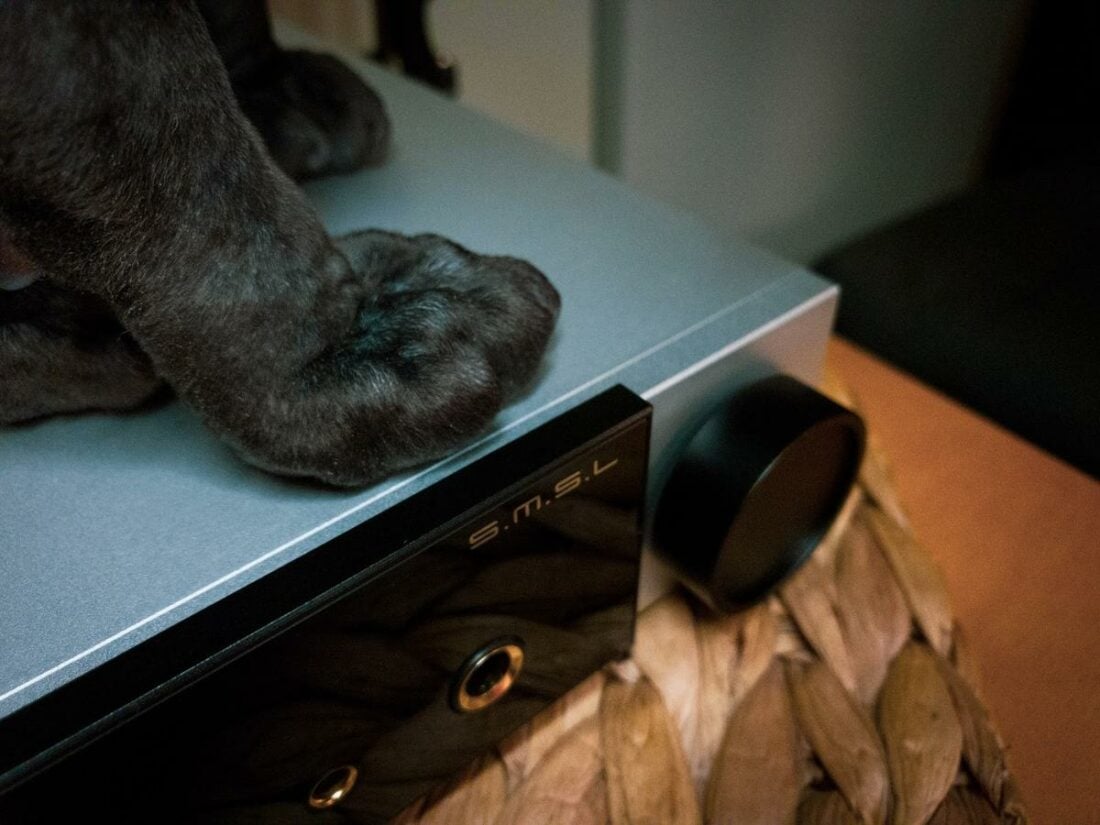
Using the remote is by far the more convenient way of controlling the SMSL SH-X. There are direct buttons for switching inputs and outputs. I prefer that an amp have physical buttons on the front panel for easier desktop use. Switching between headphones and preamp outputs with a single button push would be nice.
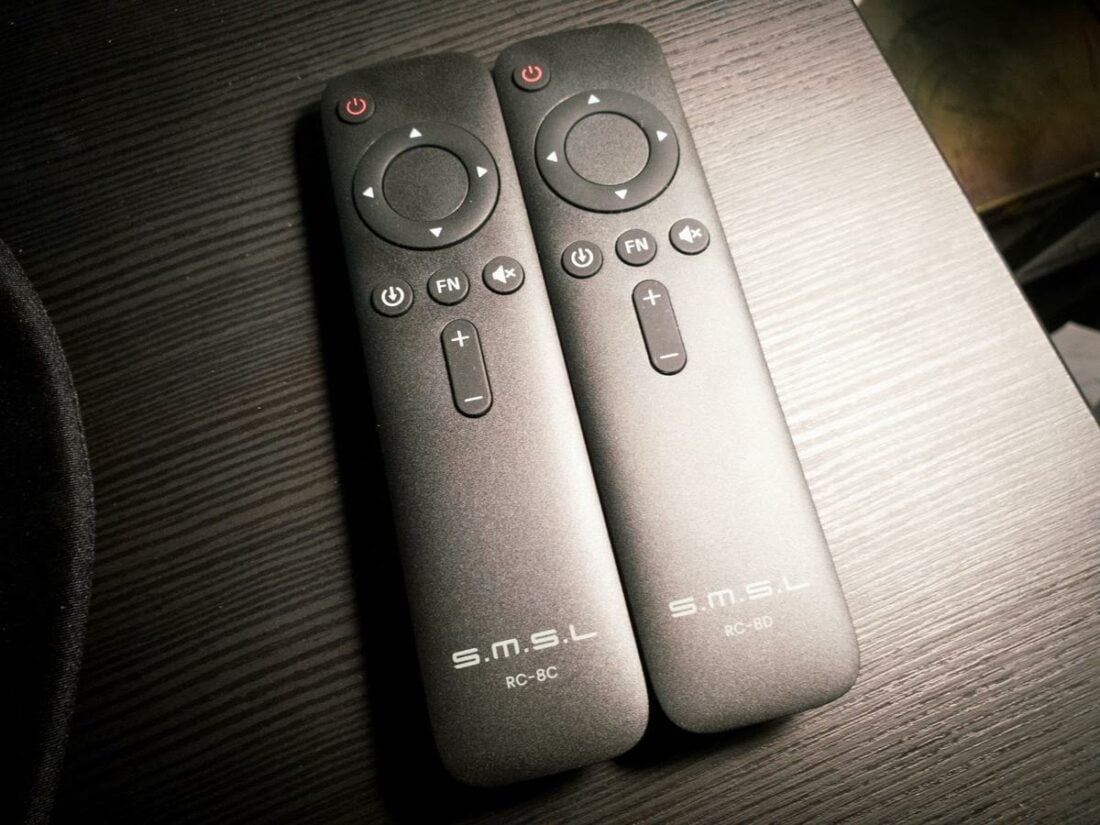
Under the Hood
The main draw of the SMSL SH-X is its 80-opamp output stage. Mind you, it’s not the highest SMSL has gone, as their previous flagship, the VMV P2, has 99 opamps in a similar configuration.
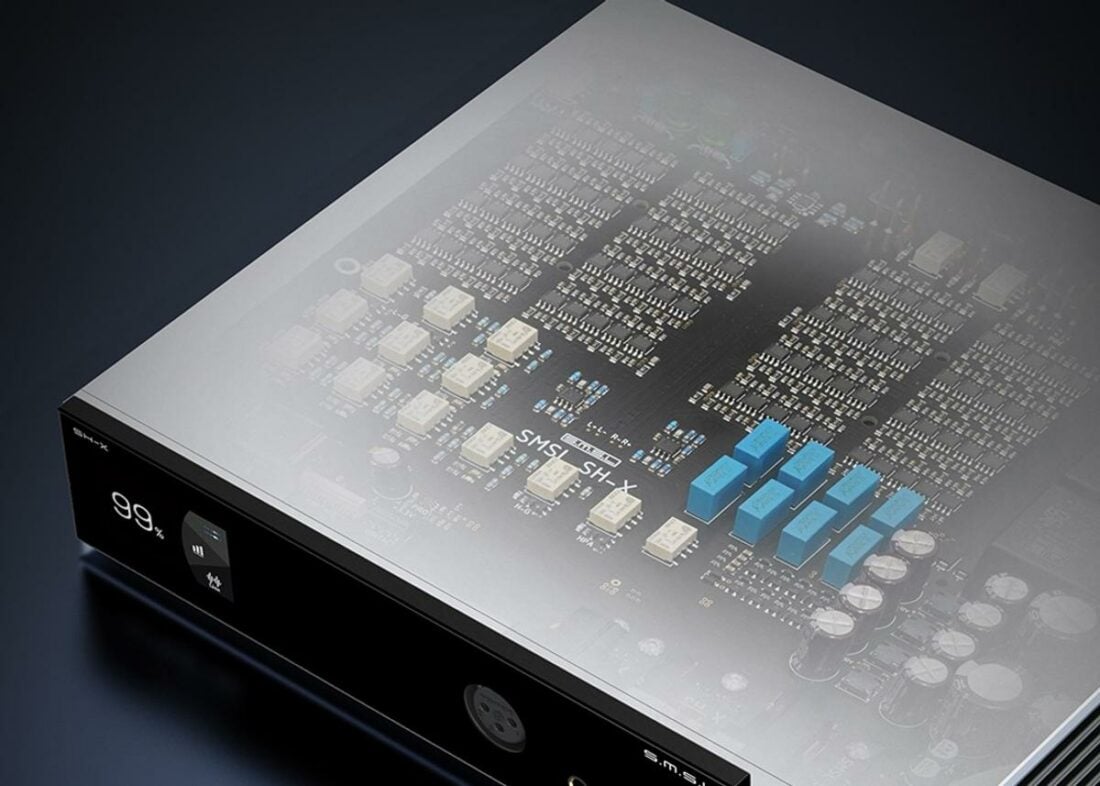
So, what’s with all the chips? Are SMSL just trying to hit price breaks when buying stock? Probably, but there’s more. By doubling the number of opamps, we get +6dB more output but only +3dB more noise. Therefore, the overall noise floor drops down relative to the output. It does wonders for SNR and measurements in general.
Having 80 opamps in parallel also has power benefits, as long as the power supply can keep up. The 11.5W power figure in 16 ohms is an impressive figure made possible by the current capability of the paralleled circuit.
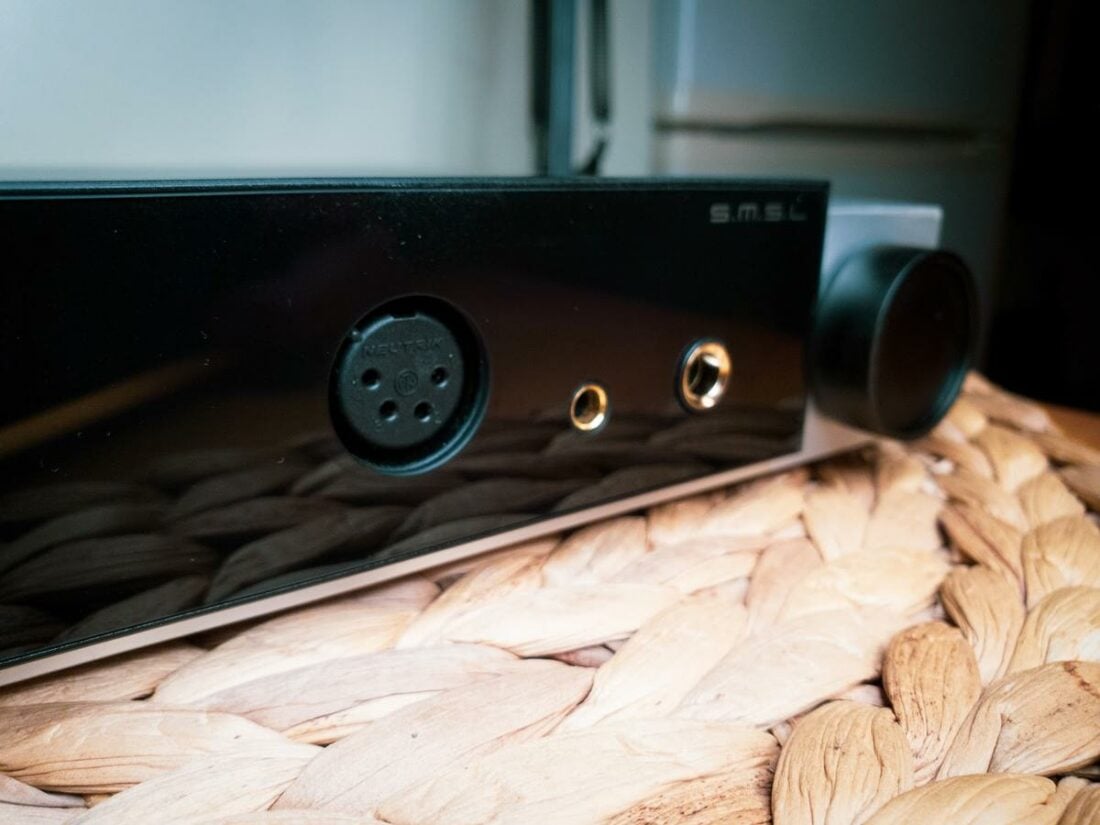
But there’s a catch!
High impedance loads are a different story because the PSU limits the max voltage and cannot exceed the max spec of each opamp used in the massive parallel array. Therefore you get a more meager 300mW at 600 ohms – equal to what a single opamp can deliver.
While the high impedance power figure is not as impressive, it should be enough for just about anything.
How Does the SMSL SH-X Sound?
In a similar vein to the SU-X DAC, the SMSL SH-X immediately shows supreme transparency. When paired up with its buddy DAC, the resulting system is the very definition of reference. It freely transforms with different recordings and displays the good and the bad of the headphones I have connected.

I am less impressed by the preamplifier implementation.
The preamplifier output must take the signal after the voltage amplifier stage because it responds to different gain settings. When used with a pair of revealing active speakers, it shows a marked reduction in soundstage depth compared to when I use them directly from the DAC.
The three gain settings make the SH-X an extremely versatile piece of gear. The lowest setting works wonders with even the most sensitive IEMs I have. Coupled with an inky black background, it makes for a listening experience rarely found in desktop amplifiers.
Moving on to more challenging loads, the Moondrop Para, with its nasty 8 ohms and 80dB/W combo, didn’t give the SH-X any trouble. The 80 opamps excel with low ohm loads and provide enough current to drive even efficient speakers.
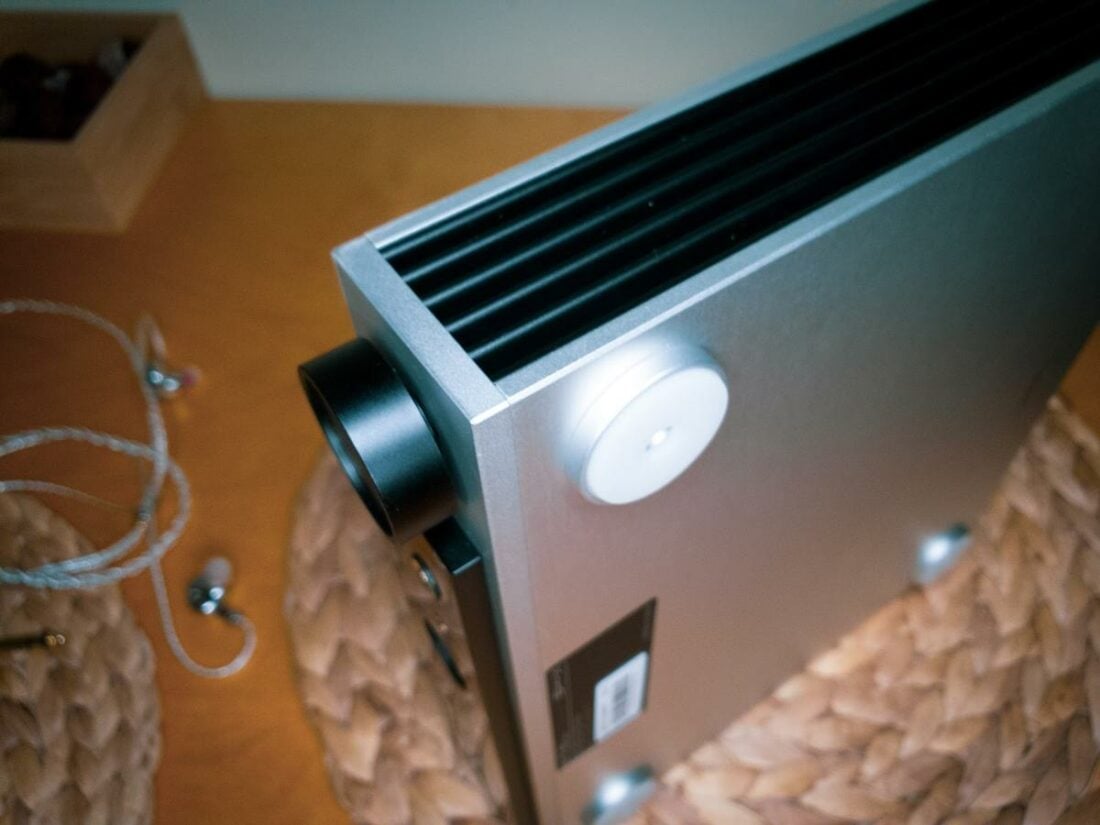
Because the current demand is distributed evenly between the amp chips, for most loads, the SH-X should stay in Class-A operation. Its 50W idle power draw and copious heat emission is a good indicator of this.
Tonally, the amplifier gives equal attention to all frequency ranges with no standouts. There’s no apparent warmness to the sound, and even at higher power levels, the SH-X maintains composure and doesn’t veer into cold and clinical territory.
It really does feel like you’re listening to the DAC directly.
Comparisons
The extremely capable and versatile Schiit Jotunheim 2 has been a mainstay in my system for years. Will the SMSL SH-X dethrone it? At almost twice the price, it should at least give it a hard time.
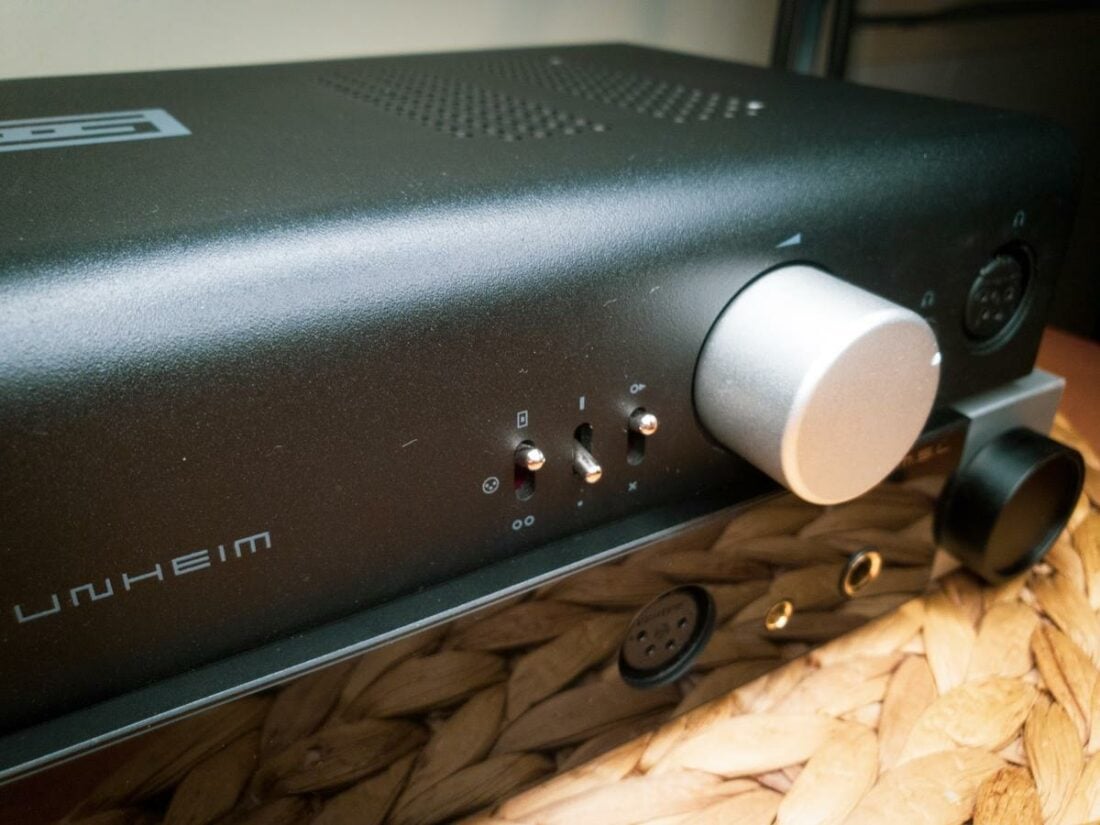
I prefer the direct front panel controls of the Jotunheim – everything is selected by flicking a nice solid toggle switch. Also, the Jotunheim’s passive preamp outputs are more transparent, even if there’s no extra gain.
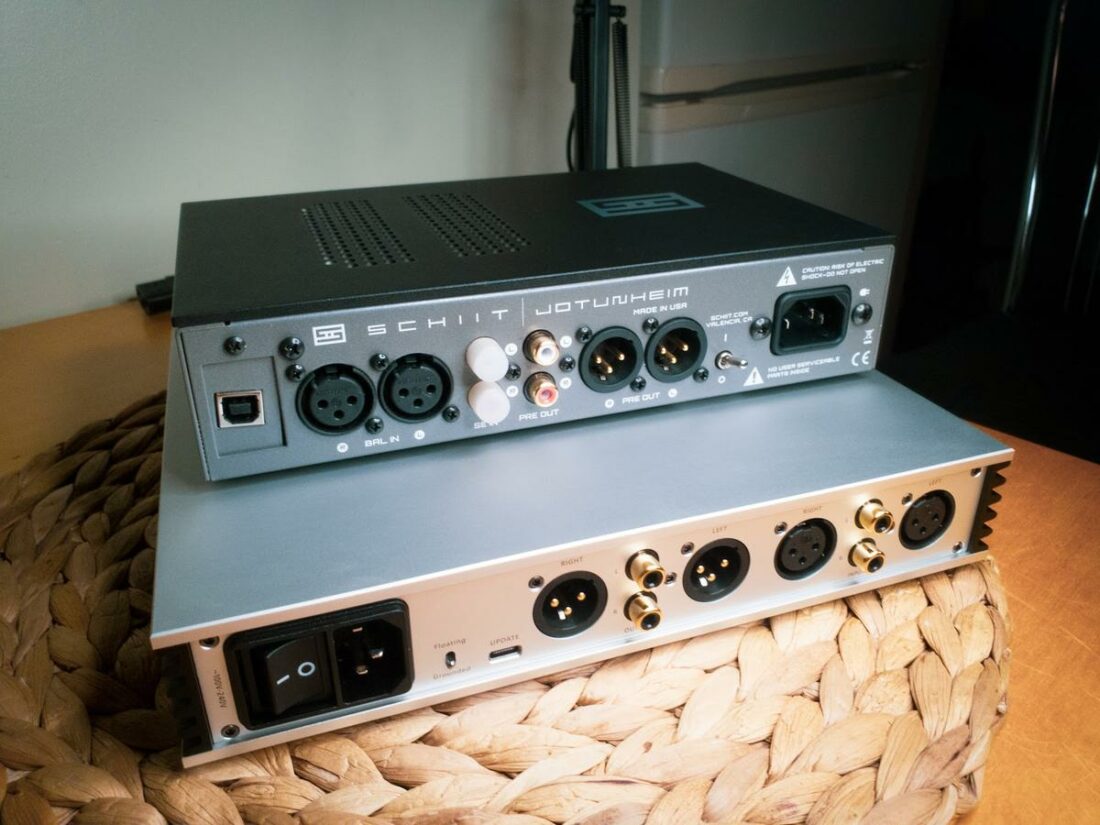
Sound-wise, the SH-X overtakes the Schiit amp.
The SH-X has imperceptible noise on all outputs, with a greater sense of imaging and transparency. Some might write it off as a lack of character, but sometimes the Jotunheim 2 can be too incisive.
With IEMs, the SH-X is on another level altogether.
Where to Buy
Who Should Buy This?
I think every IEM lover who does a lot of desktop listening will be delighted by the SH-X. Low gain, no noise, and versatile volume control make it particularly suitable for sensitive high-end IEMs. Regarding system matching, I’d be careful with using bright headphones with the SH-X – it won’t hide their tonal deficiencies.
Final Thoughts
Is the cheerleader effect (where something is more attractive in a group than on their own) real with 80 opamps? To my ears, it is. I don’t think the SH-X will convert adamant tube lovers to the solid-state side, but I’m pleasantly surprised by how well it marries transparency and musical capability.
While the preamp abilities do not blow me away, the headphone output is versatile and powerful enough to drive just about any load out there. The extreme transparency and resolution allow the SH-X to keep up with higher-end DACs without fear that there’s something lost along the way.
Again, I am unsure where SMSL can go next with their amplifier designs. Add even more opamps? I’m not sure if that’ll make a difference. However, the SH-X doesn’t make me want to look for anything more. Perhaps, only to sit in anticipation of what I’ve been missing from tracks I love and supposedly know inside out.
What’s in the Box?
- SH-X amp
- Power cord
- Remote
- QC card
- Manual
Technical Specifications
- Form: Desktop Amp
- Inputs: RCA, XLR
- Input impedance: 35k ohms
- Outputs: 4-pin XLR, 4.4mm, 6.35mm
- Output impedance: near zero ohms
- Gain: BAL out – Low (-2dB), Middle (6dB), High (23dB), SE out – Low (-8dB), Middle (0dB), High (17dB)
- Output power: 11.5W@16 ohms, 5.5W@32 ohms, 600mW@300 ohms, 300mW@600oms (unspecified if BAL or SE)
- THD+N: -123dB , 0.00006% (1kHz, 32 ohms)
- SNR: 137dB
- Dynamic range: 137dB
- Power consumption: <50W, <0.5W stand-by
- Size: 250x51x217mm (WxHxD)
- Weight (g): 2420g
